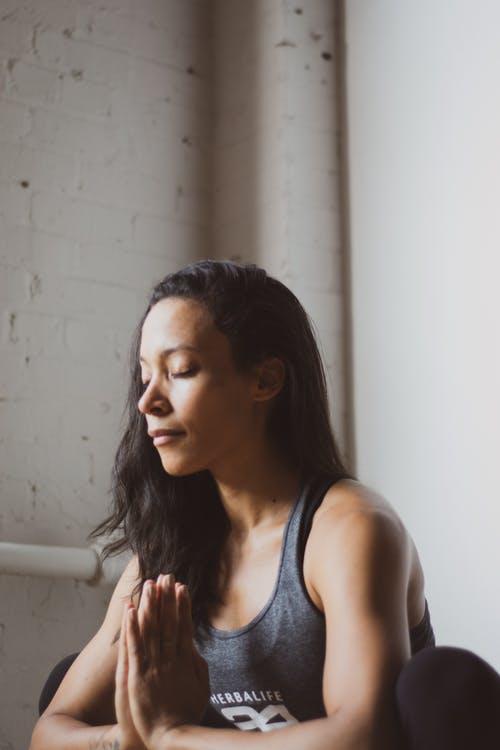
Although there are numerous techniques for meditation, many people are still uncertain about how to do it. However, the practice is often easy to incorporate into your recovery.
One way to meditate is to pause in a quiet space, close your eyes, and focus on your breath for a minute or two. The concept of meditation is to rest the mind and have a state of consciousness that differs from your normal wakefulness. Learning how to be still is actually one of the principle aspects of meditation. It’s too common in our always on, always connected modern world to lose relatability to this stillness and recognize what happens to our sense of self when we stop, breathe, and let go. So, we often don’t.
When we choose to focus on cultivating stillness in everyday moments, we begin to learn how simple meditation really is. It’s all about mindfulness. As an example, while you’re reading this article, you could take a moment right now to explore this concept. After this sentence, close your eyes and slowly count to 30 in your mind. When you’re finished, open your eyes again.
What happened?
How did the sounds around you change? Did you feel as though there was more space behind your eyes? Were there colors? What areas of the body seemed to soften a little? Could you hear your breath?
These and other micro-moments of observation help ground you in the present. While it’s possible you still had a to-do list unfurling in your mind, or the random thought of “Well, this is kind of dumb…” nevertheless in just 30 seconds, your sense of being changed:
- Systolic blood pressure slowed. This measurement records how blood moves in your arteries.
- Respiration became easier. This is why when people are upset, they’re told to take “10 deep breaths”—a focus on breath naturally prompts the parasympathetic nervous system to respond.
The combination of relaxed blood pressure and easier respiration created by our 30-second exercise is one reason why the parasympathetic nervous system—the “rest and digest” response—can send calming signals throughout your mind and body. Through mindfulness and meditation, you have the ability to evoke this sense of peace more frequently and with greater duration, for more effective results.
Practice Mindfulness
Are meditation and mindfulness the same thing? Yes—and no. Mindfulness is most certainly the first step to creating a more healthful meditation practice. And the more you meditate, the more mindful you’ll be.
Mindfulness is something we’re all capable of at any time. Just like the exercise you did a moment ago (You didn’t do it? Well maybe now you’d like to try it!), being mindful is the choice to be present. Any person can dwell in the past or be worried about the future. Stillness—and therefore, peace—is easier to achieve when the present moment is explored more completely.
Noted peace activist, Buddhist monk, and author Thích Nhất Hạnh offers one of his many observations about mindfulness: “While washing the dishes, you might be thinking about the tea afterwards, and so you try to get them out of the way as quickly as possible in order to sit and drink tea. But that means you are incapable of living during the time you are washing the dishes.”
In his book, The Miracle of Mindfulness: An Introduction to the Practice of Meditation, he carries the concept further: “Be yourself. Life is precious as it is. All the elements for your happiness are already here. There is no need to run, strive, search, or struggle. Just be. Just being in the moment in this place is the deepest practice of meditation. Most people cannot believe that just walking as though you have nowhere to go is enough. They think that striving and competing are normal and necessary. Try practicing aimlessness for just five minutes, and you will see how happy you are during those five minutes.”
This approach doesn’t come naturally to many of us. But by practicing various aspects of mindfulness in daily activities, you begin to expand your ability to recognize stillness. From here, it’s much easier to consider how meditation may help you achieve a greater sense of calm and connection with inner self, and why it’s often helpful for people overcoming substance abuse.
Mindfulness for Better Meditation
Here’s another mindfulness-to-meditation exercise for you, compliments of Mindful.org:
- Sit comfortably with your back supported.
- If you’re on a cushion, cross your legs. If you’re in a chair, touch your feet to the floor.
- Straighten your upper body and adjust your head above your shoulders. Do this naturally, without creating stiffness.
- Move your arms to the sides of your body, then rest your hands on your thighs.
- Lower your chin toward your chest just slightly. You can leave your eyes open or close them—whatever is best for you.
- Rest here and breathe. It’s possible your mind will wander—don’t worry about, judge, or fret this. When you have a thought, simply return attention to your inhale and exhale. This may happen multiple times, depending on how long you choose to sit.
- When the time feels right, get up and move on with your day.
Notice there aren’t a lot of rules for this exercise. You’re simply placing the body in a particular position and breathing. You’re not trying to stop thought, chant, or expand upon anything. This is one of many examples of how easy meditation can be through the concept of mindfulness.
And when you’re ready to expand your meditation practice, there are literally hundreds of resources available to you. For example, here’s a five-minute guided breathing meditation to try. Be curious and look into other styles and approaches to see what works for you.
Cottonwood Tucson’s Holistic Practices
Exploring meditation is one component of Cottonwood Tucson’s integrated mind-body therapy approach to addiction recovery. Our experts believe disorders often cause someone to disconnect from self-care. Through mind-body therapy, they reveal their best selves.
By Tracey L. Kelley







